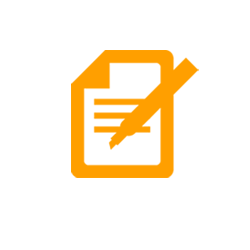Click below icon to Subscribe to Modlingua Channel
-
Hits: 1021
BY DEVANSHU BHATT
Assessing the quality of a translation service isn’t just a case of determining the effectiveness of the language work. You’ll also want to consider elements of the service such as how well your account is managed, speed of delivery, ease of doing business and technical aspects including the way your information is handled. The latter is particularly important if sensitive materials are being handled, and you’ll want some assurances about data protection if this is the case. All these factors need to be considered alongside the quality of the translated material.
Quality standard certifications help assess all of these business factors, giving you some peace of mind.
It can be difficult to get visibility of a company’s IT infrastructure and processes, which is one reason why certification is useful. It means a third party assesses their provision to ensure it is fit for purpose and you can feel confident using the service. Certification will also cover the company’s data protection policies and processes.
TranslateMedia was most recently audited in July 2016 and we are certified as ISO 17100 compliant. We were previously assessed using the older EN 15038 certification standard, which has now been replaced. There are very few differences between the 15038 and the ISO 17100 – in fact 15038 forms the basis of the more recent standard. Most of the differences are in terms of translator qualifications and record storage.
Introduced in 2015, the ISO 17100 quality standard sets out certain requirements for the core processes and resources that a translation service needs to offer. It’s a way of ensuring that both the processes and resources delivered will meet the client’s specifications. As a recent qualification, it’s useful because it takes into account the latest data protection concerns.
Standards of this type include those of the ISO 9000 series. As interest in qualitymanagement has grown, specific quality standards have been developed fortranslation services. These have included the Italian UNI 10574, the German DIN 2345, the Austrian Önorm D 1200 and Önorm D 1201, and the Canadian CAN CGSB 131.10. This new department is designed to give our readers need-to-know information about quality, as well as tips for maximizing today's technology and techniques.
With so many numbers and letters, it is difficult to keep all of the quality standards straight, particularly for those new to the industry. Quality has compiled a brief summary of some of the more widely used industry standards.
ISO 9001: 2000 specifies requirements for a quality management system where an organization needs to demonstrate its ability to consistently provide product that meets customer and applicable regulatory requirements, and aims to enhance customer satisfaction through the effective application of the system, including processes for continual improvement of the system and the assurance of conformity to customer and applicable regulatory requirements. All requirements of this international standard are generic and are intended to be applicable to all organizations, regardless of type, size and product provided.
Where any requirements of this international standard cannot be applied because of the nature of an organization and its product, this can be considered for exclusion. Where exclusions are made, claims of conformity to this international standard are not acceptable unless these exclusions are limited to specific requirements (as found in clause 7 of the standard) and such exclusions do not affect the organization's ability, or responsibility, to provide product that meets customer and applicable regulatory requirements.
Quality standards were developed for manufacturing business, most related to industrial production. The creation of standardized machinery would increase the productivity, avoiding errors and maintaining a specific line of design for the product. That way, saving time and money for the clients and guaranteeing a higher level of quality.
With globalization and its enormous technological advances, which are increasing every year exponentially, this expression is recently being related to the translation business. We experienced a shift in the customer’s requirements and expectations in relation to the translation service. Translators are required to work more efficiently and standardized not only in the linguistic and terminological field but also in the translation company’s organization.
However, standardizing companies that deals with different linguistic pairs is a very subjective process since each country has its own standardization organization in order to deal with processes and services. Therefore, translation companies are applying the International Standardization Organization. The ISO 9001 handles how to treat your employees and organize them accordingly to the client’s necessity. An ISO system takes into account the client experience as much as the industry expectations, using this system the company can better identify problems regarding its management and increase efficiency and productivity lowering the costs for both clients and service providers.
Now, specifically for the translation services providers, the European Committee for Standardization (CEN) published the EN: 15038, which is the European equivalent of ISO. It is a deeply thorough standard, which is divided in three major sections. The first one being basic requirements, this section summarizes the competences that is required for the translator, as in the technological and communication equipment necessary for the use of each type of job (technical, commercial, legal translation).
Writer's Profile http://www.modlingua.com/interns/322-devanshu-bhatt.html





